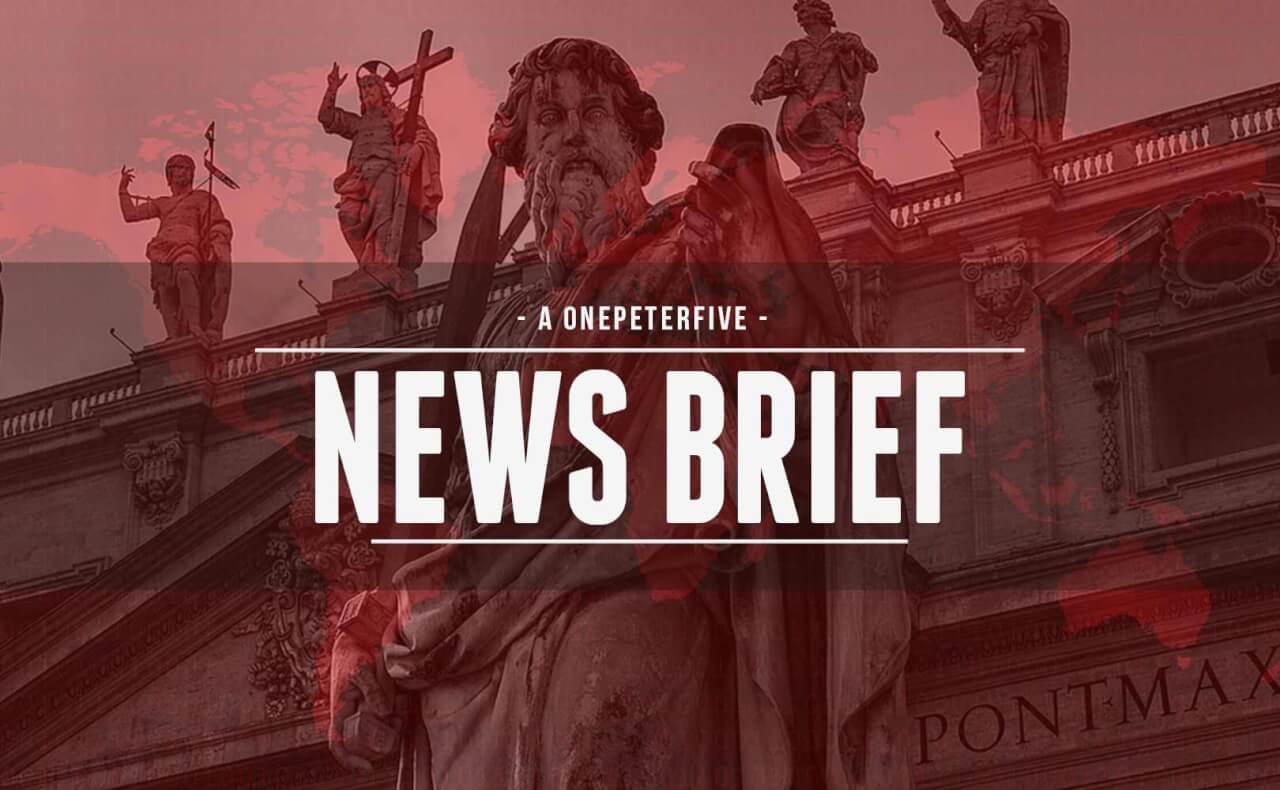In official remarks made at the Vatican today, Pope Francis referred to the controversial wooden carvings of a naked, pregnant female that first appeared at a pre-synod ceremony in the Vatican gardens on October 4 as “statues of pachamama.”
Pachamama is a pagan goddess worshiped by the people of the Andes. According to Wikipedia:
In Inca mythology, Pachamama is a fertility goddess who presides over planting and harvesting, embodies the mountains, and causes earthquakes. She is also an ever-present and independent deity who has her own self-sufficient and creative power to sustain life on this earth. …
As Andean cultures form modern nations, Pachamama remains benevolent, giving, and a local name for Mother Nature. Thus, many in South America believe that problems arise when people take too much from nature because they are taking too much from Pachamama.
One indication that Francis was already familiar with the Pachamama theme is a meeting he had in January of 2019 with Lynne Twist, co-founder of the Pachamama Alliance, an organization whose mission is “to empower indigenous people of the Amazon rainforest to preserve their lands and culture and, using insights gained from that work, to educate and inspire individuals everywhere to bring forth a thriving, just and sustainable world.” In her essay about the experience, Twist says Francis also met with some of the Alliance’s indigenous partners from the Amazon in July of 2018, which, she claims, “inspired” the pope to “rethink the Church’s relationship with the Amazon, as well as, the Church’s relationship with Indigenous people.”
The Pachamama Controversy
Ever since one of the first photos of one of the statues at the October 4 ceremony at the Vatican Gardens was published by Getty Images photographer Giulio Origlia, designating the statue as Pachamama in the caption, debate has raged about the figures’ identity. Almost immediately, commentators noted that both the ceremony and the figures themselves appeared to be pagan in nature, and questions of idolatry at the Vatican were raised.
Embed from Getty Images – MOUSE OVER TO READ CAPTION AT BOTTOM
An indigenous participant in the ceremony at the Vatican Gardens referred audibly to the statue as “Our Lady of the Amazon,” but Vatican spokesmen have made clear on multiple occasions that the statue should not be construed to be a representation of the Blessed Virgin Mary.
“It is not the Virgin Mary, who said it is the Virgin Mary?” said Vatican communications official Fr. Giacomo Costa, S.J. at a press conference on the Amazon Synod on October 16. Cristiane Murray, vice director of the Holy See press office, pointed journalists desiring more information about the statue to make inquiries to REPAM (Red Eclesial Pan-Amazónica/Pan-Amazonian Ecclesial Network), which organized the ceremony.
Upon following Murray’s directive, CNA journalists were told by REPAM executive secretary Mauricio López that he was unable to comment, referring to Fr. Costa as the “official spokesperson” of the synod, seemingly deferring to his description of the statue as “not the Virgin Mary.”
On October 21, a video emerged of several of the wooden figures — referred to in the description as “idols” — being taken from St. Maria in Traspontina, a church close to the Vatican, where the statues formed part of a display, and thrown into the Tiber river. Dr. Paolo Ruffini, prefect of the Vatican Dicastery for Communication, said in response to a journalist’s question about the nature of the statues that the Holy See communications team had “already repeated several times here that those statues represented life, fertility, mother earth,” and that their removal constituted a “theft” that “contradicts the spirit of dialogue.”
Despite their repeated insistence that the statues are not to be construed as the Virgin Mary, the Vatican has also claimed that the statues have not been treated as idols, declaring in an October 25 press conference that “no ritual, no prostration took place” relating to the wooden figures, despite video and photographs proving the contrary.
In his remarks on the topic today, Pope Francis stated that he wanted to:
… say a word about the statues of the pachamama that were taken from the church of the Transpontina — which were there without idolatrous intentions — and were thrown into the Tiber.
First of all, this happened in Rome, and, as Bishop of the Diocese, I ask pardon of the persons who were offended by this act.
Then, I want to communicate to you that the statues which created such attention in the media, were retrieved from the Tiber. The statues were not damaged.
The pope went on to inform those in attendance at the afternoon session of the 15th General Congregation of the Synod for the Amazon, where his remarks were made, that the commandant of the Italian Carabinieri was in possession of the statues that were retrieved and suggested that they may make an additional appearance at the Mass for the closing of the synod.
Francis indicated that the Secretariat of State would be handling the matter going forward.
The pope did not explain how it is possible that the statues of an Andean fertility goddess that appeared in Catholic ceremonies and churches could have been venerated and treated with what appear to have been acts of worship “without idolatrous intentions.”


